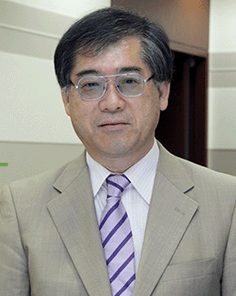Materials for molecular electronics and magnetism
Fabio
Biscarini
 *ab,
Eugenio
Coronado
*ab,
Eugenio
Coronado
 *c,
Anna
Painelli
*c,
Anna
Painelli
 *d and
Masahiro
Yamashita
*e
*d and
Masahiro
Yamashita
*e
aDepartment of Life Sciences, University of Modena and Reggio Emilia, via Campi 103, 41125 Modena, Italy. E-mail: fabio.biscarini@unimore.it
bCenter for Translational Neurophysiology-Istituto Italiano di Tecnologia Via Fossato di Mortara 17-19, 44121 Ferrara, Italy. E-mail: eugenio.coronado@uv.es
cInstituto de Ciencia Molecular (ICMol), Universitat de València, Calle Catedrático José Beltran 2, 46980 Paterna, Spain. E-mail: eugenio.coronado@uv.es
dDepartment of Chemistry, Life Science and Environmental Sustainability, Parma University, 43124 Parma, Italy. E-mail: anna.painelli@unipr.it
eDepartment of Chemistry, Graduate School of Science, Tohoku University, 6-3 Aramaki Aza Aoba, Aoba-ku, Sendai, Miyagi 980-8578, Japan. E-mail: masahiro.yamashita.c5@tohoku.ac.jp
Abstract
Functional molecular materials exhibiting, in particular, electrical, magnetic or optical properties have been an active focus of research over the last 50 years. These materials have been a source of inspiration in two interrelated areas of research, namely, molecular electronics and molecular magnetism, with important implications in biomedical areas. This themed issue highlights recent progress and perspectives in these important areas of materials science. The issue covers topics from the chemical design and manipulation of novel molecular materials with unprecedented control over their properties, even at the single-molecule level, to exciting applications of these special molecular systems in emerging fields, including bioelectronics and molecular spintronics.
 Fabio Biscarini |
 Eugenio Coronado |
 Anna Painelli |
 Masahiro Yamashita |
From molecular electronics to bioelectronics
The vision of organic semiconductors based on delocalized π-conjugated electrons dates back to the 1930s. The modern field of molecular electronics started in the late 50s to 70s with the advent of polyacetylene (eventually acknowledged with the Nobel Prize in Chemistry in 2000) and other conductive π-conjugated polymers, and further evolved with organic semiconductors in the 70s, as well as in the 80s with charge-transfer crystals exhibiting superconductivity, among other properties.The boost in organic electronics1 was in the mid-80s to early 90s with the advent of organic field effect transistors (OFETs) and organic light emitting diodes (OLEDs) based on thin films of conjugated molecules and polymers that could be operated at low voltages. The possibility to exploit charge and exciton transport in molecular materials was demonstrated in real devices, whose properties could be fine-tuned via the chemical design of the active materials. This extensive worldwide research quickly led to new products in the consumer electronics market, OLED displays and TVs, and, to a different extent and market success, organic photovoltaics and organic spintronics. Importantly, the success of organic electronics was accompanied by the development of large area and high throughput additive manufacturing of the devices. Indeed, organic electronics was established as a technology platform based on novel organic materials and on novel additive processes inspired by printing technology. The combination of precise material design and low-cost additive manufacturing offers a virtuous example of the development of a sustainable technology.
In parallel, inspired by the pioneering vision of a molecular rectifier by Aviram and Ratner in the 70s and by the development of scanning probe microscopies and nanofabrication and manipulation techniques in the 80s, molecular electronics started to explore the possibility to exploit charge transfer and tunnelling across single molecules, including proteins and oligonucleotides, as the ultimate semiconductors. This effort led to the emergence of single-molecule electronics (also known as molecular nanoelectronics)2 whose major goal was the development of functional and reproducible nanoscale molecular devices of potential interest for the microelectronics industry. Mechanically controlled break junctions3 and junctions based on self-assembled monolayers (SAMs)4,5 appeared as robust experimental approaches.
Finally, organic transistors have been coupled to proteins, nucleic acids, cells, tissues and organs, giving rise to organic bioelectronic devices. Since the mid-2000s, organic bioelectronics has been the most vigorous and innovative area for OFETs as ultrasensitive biosensors and transducers. The principle behind their operation is the gating of the organic semiconductor channel by ionic and molecular interactions at the interface with aqueous electrolytes. These interactions are modulated by a gate electrode immersed in the electrolyte, as in a transistor, or by bio-recognition events that are then transduced into a change in the OFET response. Organic bioelectronics has opened new research fields on organic and soft materials that can be operated in extreme conditions (water is known to hamper the charge transport in traditional OFETs) and that must possess additional requisites such as ultra-low power, mechanical compliance, chemical stability and biocompatibility. This combination of functional and biological properties is a new stimulating challenge for materials scientists.
From molecular magnetism to molecular spintronics
Molecular magnetism6 began to take shape in the 80s with the aim of testing the existing solid-state theories about exchange interactions and electron delocalization in chemically designed molecular models (mainly homometallic and bimetallic magnetic dimers and small clusters). This basic understanding allowed the expansion of the field towards the design of higher dimensional materials exhibiting cooperative magnetic phenomena and, thus, in the 90s a plethora of molecule-based ferromagnets with ordering temperatures, Tc, reaching room temperature were produced.Later, more complex materials were designed by chemists, the novel magnetic properties of which were investigated by physicists. The fast evolution experienced by molecular magnetism in the past 25 years or so afforded two different classes of magnetic materials that have dominated the field since then: single-molecule magnets (SMMs) and multifunctional magnetic materials. SMMs are small magnetic clusters that, when discovered in the 90s, showed the properties of tiny magnets being able to store information at low temperatures while exhibiting quantum effects, such as the quantum tunnelling of the magnetization. More recently, with the discovery of a second generation of SMMs, based on mononuclear lanthanide complexes, magnetic hysteresis curves were observed at temperatures above liquid nitrogen. At the same time, these molecules started to be exploited for designing robust spin quantum bits for quantum computing.7
Multifunctional materials have provided a unique opportunity to create innovative molecular materials by combining two or more properties that are difficult or impossible to achieve together in purely inorganic solids. Thus, materials like magnetic conductors and superconductors, chiral conductors and magnets, porous magnets or stimuli-responsive magnets have been discovered.8 The collaborations between the molecular electronics and molecular magnetism communities were instrumental to the emergence of the field of molecular spintronics, in which the addition of the spin degree of freedom to molecular electronics opened a whole new suite of functionalities. In a similar way to what happens in molecular electronics, molecular spintronics can be divided into two large areas, namely organic spintronics and molecular nanospintronics. Their ultimate goals are, respectively, the fabrication of new and cheap spintronic devices exploiting molecular materials and the downscaling of the device size down to the single-molecule limit, with the final aim of manipulating the spins one by one. Along these lines, the work in these areas has evolved from the design of crystalline materials to the processing of functional molecules and materials at the molecular level to obtain thin films,9 self-assembled nanostructures or individual molecules and to integrate them into hybrid spin devices.10
This issue is a tribute to Concepció Rovira and Jaume Veciana, from the Institut de Ciència dels Materials de Barcelona (Spain), on the occasions of their 70th birthdays. Their intense work as chemists and materials scientists has led to seminal contributions in diverse areas of molecular electronics and magnetism. Indeed, their work encompasses the discovery of novel molecular conductors and superconductors, the use of an organic approach to develop novel spin molecules, molecule-based magnets and multifunctional materials and, finally, the exploitation of their properties to fabricate novel molecular devices for bioelectronics and spintronics. Their work has always not only focused on the exquisite materials’ properties, but has also been directed toward new and unconventional processing and patterning methods as a central tools for the control of the materials’ properties in devices. Concepció and Jaume have been dedicated scientists with broad and deep visions, but they have been also attentive and actively involved in technology transfer. In fact, some of the methods that they have developed for fabricating and processing molecular systems are currently being exploited by startup companies.
Concepció and Jaume's friends and collaborators have contributed to this issue with original papers covering topics from the chemical design and synthesis of novel functional molecules and materials to their assembly, integration in devices and the study of their electronic and magnetic properties using both theoretical and experimental approaches. These results are representative of the current intense activity in these areas. In particular, from a chemical point of view, the contributions extend from discrete molecules (like organic radicals, fullerenes, oligothiophenes, phtalocyanines, single-molecule magnets and switching spin-crossover complexes) to low dimensional materials (like carbon nanotubes, spin chains, graphene and other 2D materials), extended materials (like covalent organic frameworks and magnetic Prussian blue analogues) and hybrid organic–inorganic materials (like hybrid nanoparticles). From a materials science perspective, these materials exhibit remarkable physical properties (like ferromagnetism, ferroelectricity, semiconducting, conducting and superconducting properties, molecular-scale memory, chirality and quantum spin properties). Finally, some illustrative examples showing the integration of these molecular systems in organic electronic devices, like OFETs, OLEDs, organic spin-valves and nanoscale devices, are reported.
We are grateful to the authors for enthusiastically participating in making this Festschrift in honour of Jaume and Concepció and contributing to this themed issue with their original work. We also thank the Editorial team of J. Mater Chem. C for their invaluable support in bringing this issue together.
References
- P. W. M. Blom, Polymer Electronics: To Be or Not to Be?, Adv. Mater. Technol., 2020, 5, 2000144, DOI:10.1002/admt.202000144.
- R. L. Carroll and C. B. Gorman, The Genesis of Molecular Electronics, Angew. Chem., Int. Ed., 2002, 41, 4378–4400, DOI:10.1002/1521-3773(20021202)41:23<4378::AID-ANIE4378>3.0.CO;2-A.
- M. L. Perrin, E. Burzuri and H. S. J. Van der Zant, Single-molecule transistors, Chem. Soc. Rev., 2015, 44, 902–919, 10.1039/c4cs00231h.
- S. Casalini, F. Leonardi, C. A. Bortolotti and F. Biscarini, Self Assembled Monolayers in Organic Electronics, Chem. Soc. Rev., 2017, 46, 40–71, 10.1039/C6CS00509H.
- M. Mas-Torrent and C. Rovira, Role of Molecular Order and Solid-State Structure in Organic Field-Effect Transistors, Chem. Rev., 2011, 111, 4833–4856, DOI:10.1021/cr100142w.
- E. Coronado, Molecular Magnetism: from Chemical Design to Spin Control in Molecules, Materials and Devices, Nat. Rev. Mater., 2020, 5, 87–104, DOI:10.1038/s41578-019-0146-8.
- A. Gaita Ariño, F. Luis, S. Hill and E. Coronado, Molecular Spins for Quantum Computation, Nat. Chem., 2019, 11, 301–309, DOI:10.1038/s41557-019-0232-y.
- D. Maspoch, D. Ruiz-Molina and J. Veciana, Magnetic Nanoporous Coordination Polymers, J. Mater. Chem., 2004, 14, 2713–2723, 10.1039/b407169g.
- M. Mas-Torrent, N. Crivillers, C. Rovira and J. Veciana, Attaching Persistent Organic Free Radicals to Surfaces: How and Why, Chem. Rev., 2012, 112, 2506–2527, DOI:10.1021/cr200233g.
- S. Sanvito, Molecular Spintronics, Chem. Soc. Rev., 2011, 40, 3336–3355, 10.1039/c1cs15047b.
| This journal is © The Royal Society of Chemistry 2021 |

